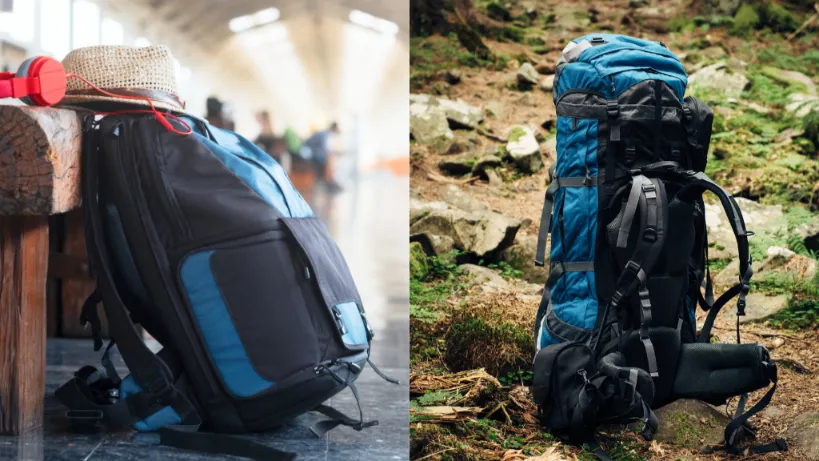Hiking backpacks are in a league of their own compared to your everyday travel backpacks or the one you might use for school or work.
They come packed with features specifically designed to make your outdoor adventures as enjoyable as possible. This fact alone makes choosing the right hiking backpack intimidating, especially for beginners.
After hours spent in shops, countless tries, and a bit of trial and error, I’ve nailed down the 7 most critical features your hiking backpack absolutely must have, so you can spend less time in stores and more time on the trails.
How to Choose a Hiking Backpack?

Capacity
The capacity of a backpack is measured in liters and it determines how much gear you can carry with you on your hike. The general rule of thumb is: the longer the hike, the higher the capacity should be.
But it’s not just about picking the biggest bag you can find. It’s about matching your needs to the size of your pack. Too big, and you’re carrying extra weight for no reason. Too small, and you might leave behind essentials.
How do you know what’s just right? It depends on the type of hiker you are or the type of hikes you’re planning.
How Many Liters Should a Hiking Backpack Be?

- For short hikes that take a couple of hours, I stick to a capacity of 10-15 liters. It’s perfect for water, a snack, and maybe a light jacket.
- Heading out for the entire day? Then a backpack with 15-30 liters capacity is my go-to. It has enough room for food, water, extra clothes, and must-have items like sunscreen and a first aid kit.
- Overnight hikes are a bit trickier, but a backpack with around 30+ liters capacity usually does the job for me. It fits a sleeping bag, some food, water, and a change of clothes.
- For 2-3 days trips, I bump it up to 30-40 liters. This size lets me pack a bit more food and maybe an extra pair of socks.
- When we get into 3-5 days trips, I’m looking at 40-60 liters. This is great for when you need to carry more food, water, and maybe some extra layers for changing weather.
- And for epic adventures lasting 5+ days, I don’t mess around – I go for 60+ liters. This size is for the serious hiker carrying everything needed to be self-sufficient for days on end.
While choosing the capacity, think about what you’re bringing, how long you’ll be gone, and what comforts you can’t live without.
And remember, every hike is different, so it’s okay if you end up having a couple of backpacks for different types of trips.
Fit and Comfort
A good fit is the difference between ending the day ready to conquer another trail or sprawling on your couch vowing never to hike again.
Ideally, you’ll want your new backpack to feature 5 important elements: a hip belt, sternum strap, adjustable backplane, stabilizers and shoulder straps.
These elements help to distribute the weight evenly, provide proper support and keep the backpack securely in place.

Shoulder Straps
They shouldn’t pinch or rub. They should sit comfortably on your shoulders, distributing weight without making you feel like you’re carrying the world on your back.
Hip Belt
Most of your pack’s weight should rest here, right on your hips. It’ll let your strong leg muscles do the heavy lifting, rather than your back. The hip belt should hug your hips snugly but not too tight.
Sternum Straps
They might seem small but they play a big role. By pulling your shoulder straps closer together, they help keep your backpack stable.
Stabilizers
They’re typically located near the top of your backpack and help pull the load closer to your body, improving balance. It’s a bit like tuning a guitar – you adjust them until everything feels just right.
Adjustable Backplane
Not everyone’s back is the same, which is why this feature is important. It allows you to adjust the length of the backpack to match the length of your torso. Finding a sweet spot where the backpack feels like an extension of your own back is what you should prioritize.
This sounds like a lot to look for, but once you find a backpack that fits like a glove, every hike becomes a bit easier, a bit more enjoyable, and definitely less of a pain in the back.
It’s worth taking the time to try on different backpacks, adjusting and readjusting, until you find the one that feels just right.
Weight
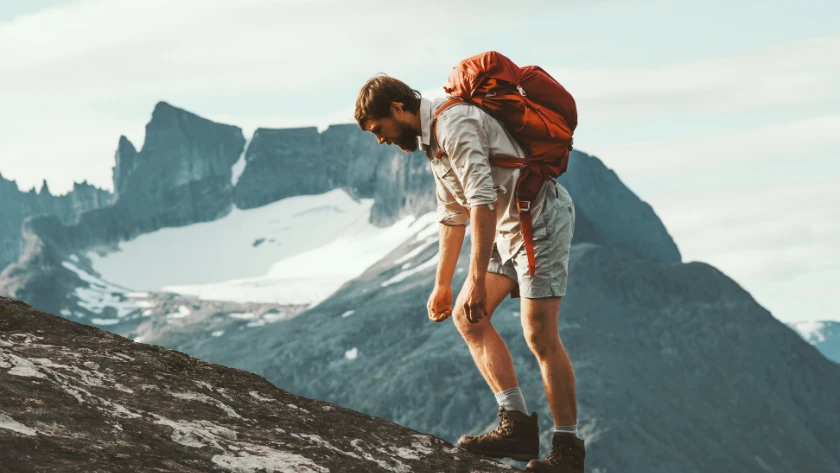
Ideally, your new hiking backpack should weigh less than 3 pounds when empty. Choosing a lightweight backpack gives you the freedom to pack what you need without the base weight holding you back.
Materials play a big role in how lightweight your backpack is. Modern backpacks use materials like ultralight nylon that cut down on weight without compromising on durability.
The design of a backpack is also important as it can influence its perceived weight. A well-designed backpack can make a 20-pound load feel lighter than a poorly designed one with the same weight. It’s all about how the weight spreads across your back and hips.
Material and Durability
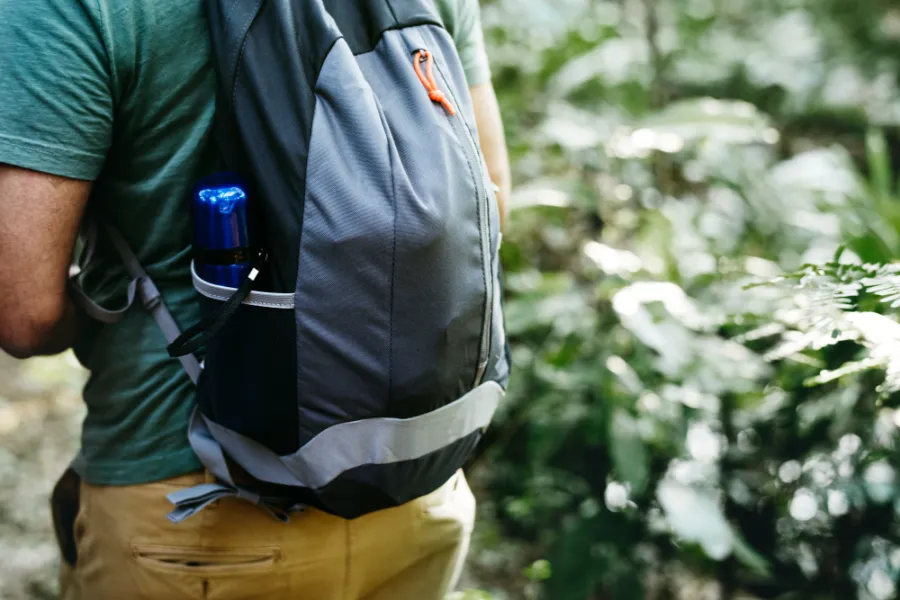
The right material matters because it helps with balancing weight and toughness. You want something that feels like a feather but tough as nails. Sounds like a dream, but it’s actually pretty doable.
Most top-notch hiking backpacks use materials like nylon or polyester, but not just any old kind. These are often special versions like ripstop nylon (which is the most popular material for hiking and outdoor backpacks) or high-denier polyester. These materials are designed to resist tearing and stand up to all sorts of abuse.
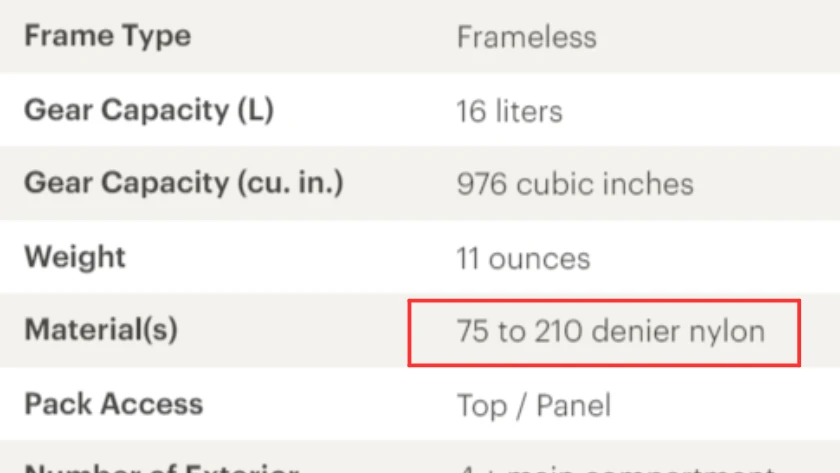
Also, pay close attention to the zippers, seams, and any points where straps attach to the bag. These are the areas that usually give out first. Metal zippers can be a good sign, and double stitching at seams is like a durability seal of approval.
But how do you know if a backpack is durable? Apart from checking those points I just mentioned, reading reviews and experiences from other hikers can be super helpful.
Water Resistance and Waterproofing
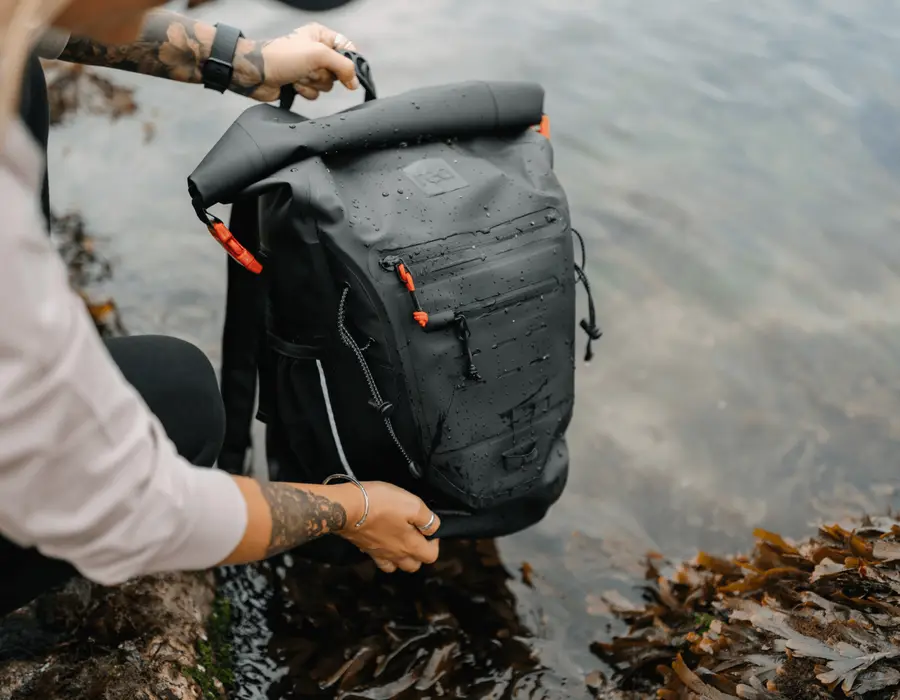
High-quality materials are not only lightweight and durable, but also water-resistant and even waterproof.
Usually, backpacks with materials that come with a durable water repellent (DWR) coating provide decent amount of water resistance. This won’t make your pack fully waterproof (for that, you’d need a cover or liner), but it will make raindrops bead up and roll off instead of soaking in.
However, if you plan to dunk your pack in a lake or river or hike in rainy areas for hours, you’ll need something more than just DWR.
Look for backpacks with waterproof material and sealed zippers to keep everything inside dry. They are relatively hard to find and cost a bit more, but can be an amazing investment when the weather gets rough.
Ventilation
Your body heats up on hike. And if your backpack is all up against your back with no space for that heat to escape, you’ll find yourself drenched in sweat pretty quickly.
A well-ventilated backpack helps keep the air flowing between you and the pack, keeping you cooler and more comfortable.
So, what should you look for to ensure your backpack is a breath of fresh air? Look out for a mesh back panel. They’re designed to stand off from your back, creating a lovely little channel for air to flow through.
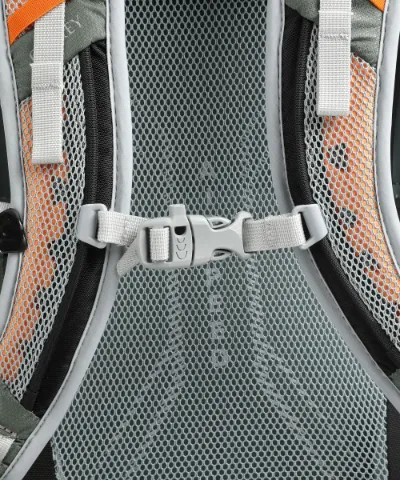
Next, peek at the shoulder straps. You want these to have some good padding, but also look for ones with ventilation. Many packs have straps with perforated foam or mesh materials. These are fantastic when it comes to preventing the dreaded shoulder sweat.
And don’t forget the hip belt. Yes, even hip belts can contribute to keeping you cool. Like the shoulder straps, look for ones with good ventilation features – mesh overlays or breathable foam can make a big difference.
Accessibility
How easily you can grab your gear is more than important when I’m on the trail. If I have to take off my pack and dig around for every little thing, it can quickly become a frustrating experience.
Pockets
Of course, the first thing that comes to mind when we talk about accessibility in backpacks are pockets.
They should be handy and well-placed so you can reach without having to do a mini workout. Side pockets are perfect for water bottles, while hip belt pockets (I love them so much!) keep your snacks or phone within arm’s reach.
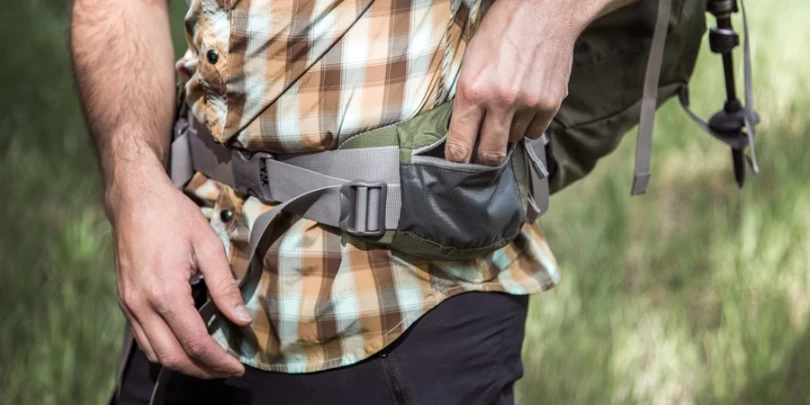
The ideal number of external pockets depends on your needs, but be careful not to overdo it and end up with a heavy and bulky pack.
While buying a new daypack, I usually aim for one large front pocket for things I need to access quickly, and one or two smaller ones on the sides for other essentials.
However, when I’m planning a multi-day trip, I choose a backpack with at least 4+ external pockets, so I can have my gear organized and easily accessible throughout the day.
Compartments
A good backpack will have a main compartment, sure, but also a few separate ones that allow you to organize your stuff in a way that makes sense. Some even have a sleeping bag compartment at the bottom.
If you are a hiker with a digital nomad’s soul (like me), I’m sure you’ll appreciate a laptop sleeve and other smaller pockets for your electronics. The Fjallraven Ulvo is my choice whenever I want to take my laptop with me on a hiking adventure.

Access Points
A top-loading backpack is pretty standard, but imagine one that also has a zipper opening along the side or front. This feature makes reaching for gear at the bottom of your pack so much easier.
Both top-loading backpacks and those with zipper opening along the side have their own advantages. I personally prefer a top-loading one for longer hikers as it gives me more room to pack my gear.
But if you already know that you’ll be digging in your backpack throughout the day, then go for a model with a side zipper.
Hydration Compatibility
Hydration compatibility is a fancy way of saying your backpack can easily carry and give you access to water without having to stop, unpack, and rummage through your stuff.
Most modern hiking backpacks come with at least one of two features:
- A built-in hydration reservoir sleeve
- Side or strap pockets that can hold water bottles
The best part? Some packs have both, giving you options based on your hike or personal preference.
If you’re like me and prefer sipping on the go, then a backpack with a hydration reservoir sleeve and an opening for the hose might be ideal for you. Instead of stopping, you just grab the hose, take a sip, and keep moving!
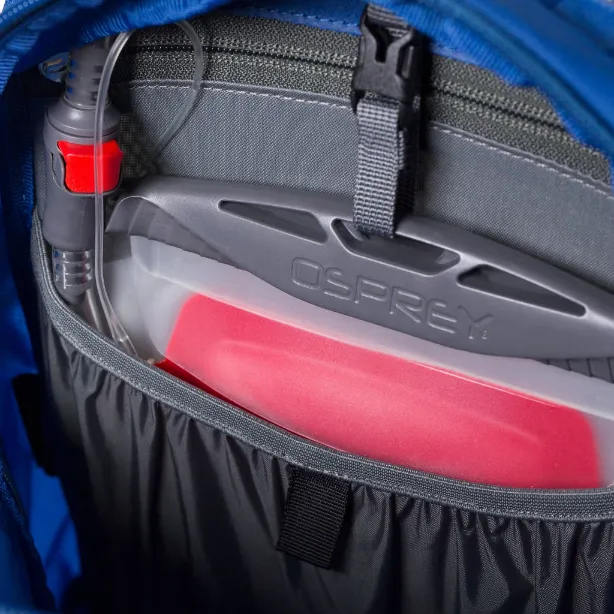
On the flip side, maybe you’re a fan of the good old water bottle. If that’s the case, look for a backpack with easy-to-reach side pockets. Make sure they’re deep enough to secure your bottle but also easy to grab.
Ideally, they should accomodate 30 oz. bottles with ease, and if you’re more like a day hiker, a room for 24 oz. bottles should be enough.
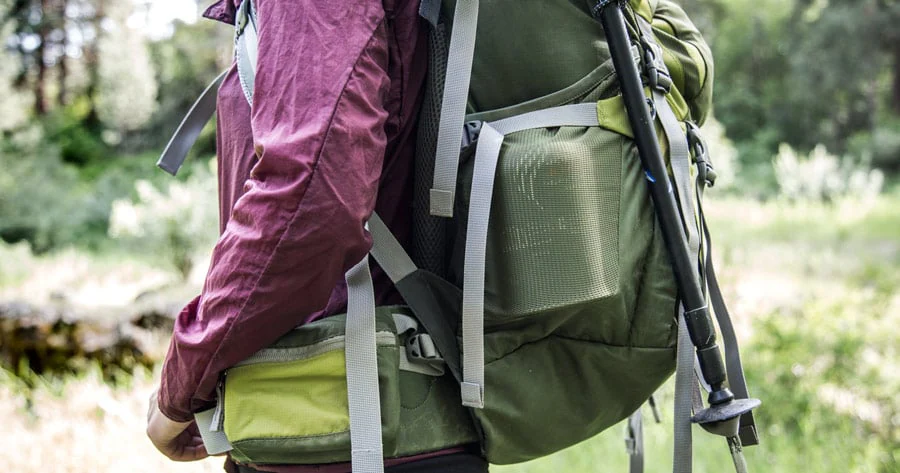
Regardless of which system you go for, always check how easy it is to refill. There’s nothing worse than being super thirsty, finding a water source, and then spending ages trying to get your reservoir back into a fully packed bag.
I also sometimes use the reservoir for water and the side pockets for electrolyte drinks. That way, I have quick access to both and can stay properly hydrated on the trail.
Conclusion
It’s pretty clear that specialized hiking backpacks have evolved significantly over the years. They now come packed with features that, while super helpful, also demand from us hikers a bit more legwork before we invest in one.
In this article alone, we’ve covered seven critical features to consider, from weight and material durability to hydration compatibility.
While these features are key to making an informed choice, there are also smaller touches that can elevate your hike from good to great. Think about the color of the interior for easy spotting of your gear or even the bonus of an included rain cover to keep your belongings dry.
However, if you’ve stuck with me up to this point, you’re now equipped with the knowledge to make a smart purchase!

Lukas Heller
Hey there! I’m Lukas, co-founder of BigfootHiking.com, alongside my adventurous wife Martha. Originally from Germany, I landed in Phoenix, Arizona, in 2015, where I’ve been scouting out new trails ever since (though they’re getting scarce!). By day, I’m a software developer, but my heart belongs to hiking – I’m always plotting our next trip. When I’m not coding or on the trails, you’ll find me hanging out with our Pit Bull, Zeus.




